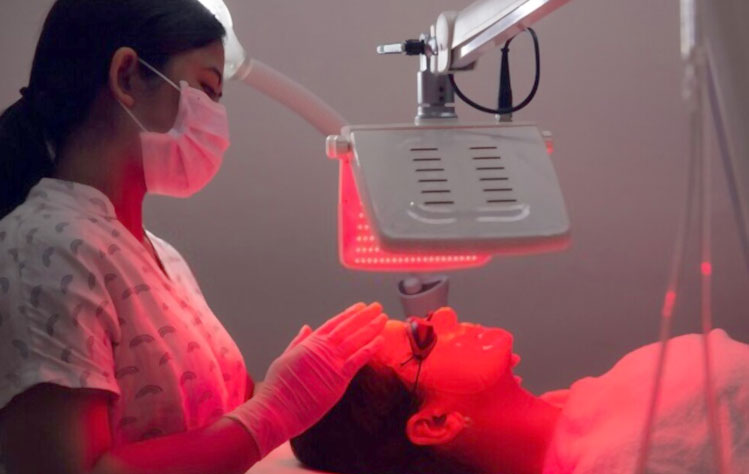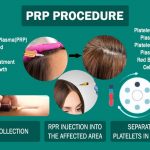Light therapy is an emerging technique used to treat various skin and many other medical conditions. It is a risk-free treatment method that penetrates skin layers and repairs them. A specific wavelength of light from the electromagnetic spectrum can reduce tissue inflammation, joint pain and even cure pre-cancerous lesions.
There are a few types of light therapy that dermatologists and estheticians frequently use to treat various skin conditions. Professionals frequently combine it with additional procedures, including lotions and ointments.
The Types of Light Therapy
Different types of light therapy have different effects on the skin and are used depending on the condition. Some popular types of light therapy are as follows:
Red Light Therapy
Red light therapy uses low-wavelength red light to improve the appearance of your skin. It is also suggested as a cure for other conditions. Red light has been demonstrated to have therapeutic or healing effects on the body’s tissues when applied in the proper amount and intensity.
How Red Light Therapy Works
In order to restore the skin, red light therapy uses light of a certain natural wavelength along with heat released from light-emitting diodes (LED). It has the capacity to accurately and directly affect and boost cellular activity in human cells and is thought to be bioactive at this particular wavelength.
Healthcare professionals have already widely embraced using this procedure in photodynamic therapy. By applying a low-power red laser to activate a photosensitizer chemical, this therapy triggers a chemical reaction that kills cells upon contact.
Red light can penetrate our skin’s top layer, the epidermis, and reach the dermis, the deeper layers of the skin that contain elastin, collagen, and a few other essential proteins.
Red light photons are taken up by our cells, where they are converted into energy. Your cells can access more energy when adenosine triphosphate (ATP), elastin, and collagen are created from the energy generated.
The Benefits of Red Light Therapy
Red light therapy can treat several skin disorders, such as warts, psoriasis, acne, and even skin cancer. The pros of red light therapy make it an effective solution to improve your health and well-being.
Red light treatment could be useful in the following ways:
- Promoting collagen production, which gives skin its smoothness, strength, and structure
- Increasing the production of collagen-producing fibroblasts
- Increasing the flow of blood to the tissue
- Cellular inflammation reduction
- Reducing the spread of germs
- Curing pre-cancerous lesions
Red light therapy has no known side effects, and the process induces no pain either.
Blue Light Therapy
Blue light therapy is generally used to improve the outer layers of skin as it cannot deeply penetrate the epidermis. It is generally recommended to cure skin conditions like acne and sun damage. Blue light therapy is also proven to prevent skin cancer.
How Blue Light Therapy Works
Blue light therapy is generally performed as an outpatient operation and is a relatively rapid process. The photodynamic therapy used to treat cancer in high-risk locations may be the exception to this rule.
The process is carried out in a dimly lit room by skin care experts. When employing photosynthesizing medications, they will topically apply medication to the affected area.
The Benefits of Blue Light Therapy
The most typical uses of blue light treatment are to cure sun damage and precancerous or malignant skin growths. It can be used to treat precancerous and cancerous skin lesions that haven’t migrated to other parts of the body and to prevent skin cancer.
It can be used to lessen swollen oil glands and enhance skin texture. Acne, sun spots, and even acne-related scars can all be removed with this treatment.
Besides skin conditions, it can also be used to treat depression. It works particularly well for treating seasonal affective disorders, also known as SAD.
Green Light Therapy
You might want to think about green light therapy if you want to improve your appearance and general well-being. Green light therapy is a very effective LED treatment for migraines and both acute and chronic pain.
This non-invasive procedure is appropriate for all skin types. Green light therapy may therefore be the best option for you if you’re seeking a practical and economical solution.
How Green Light Therapy Works
Green light therapy mainly works by stimulating the body’s cells and tissues, increasing collagen production and photosynthesis. Moreover, it helps lessen skin inflammation, making it an ideal option for people with acute or chronic pain.
Additionally, the green light principle applies to skincare and cosmetics from the ground up. It focuses on the skin cells that cause pigmentation and stops them from moving toward the skin’s surface. It disperses melanin clusters to get rid of existing skin discoloration or age spots.
The Benefits of Green Light Therapy
Under-eye circles, hyperpigmented skin, and dilated capillaries can all be treated with green light therapy. It also treats dilated capillaries, sagging breasts, dark circles under the eyes, and hyperpigmentation.
Some other benefits include
- Treating chronic migraine
- Improved sleep
- Higher energy levels
- Reducing skin inflammation
FAQ
What is the Best Type of Light Therapy?
The best type of light therapy for you depends on the condition you are trying to improve. Though there are some common uses of all three, professionals recommend different treatments to focus on what they want to cure.
Which Light Therapy is Used for Depression?
Blue light therapy is considered a treatment for depression. It is mainly used to cure seasonal depression, also known as SAD.
What is the Best Light Therapy for Anti-aging?
Red light therapy is best for anti-aging as it encourages collagen production and rejuvenates skin, making it healthy and less wrinkly.
Bottom Line
Light therapy has been known for its healing virtues from its very early days. Thorough research has made it a promising solution for various medical conditions. Healthcare professionals also recommend different types of light therapies for treatment. Knowing which light therapy is ideal for what is essential if you’re looking for easy and effective treatment plans.









